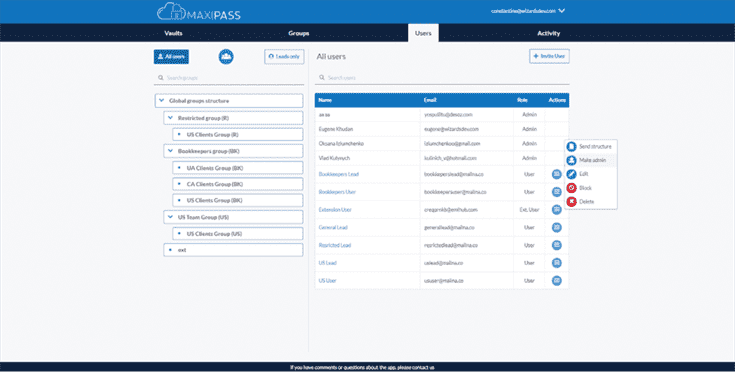Contents
So the expected reduction in development time may not be achieved if your developers are not familiar with the chosen framework. Angular is also really versatile, it can be used for large, one-page app projects or for a small little element; there’s not much setup required to start using Angular’s built-in directives. Backbone represents data as models which can be created, validated, destroyed, and saved to the server. Views are used to display the model’s state and can be triggered when a property has changed. The Views can then respond accordingly or re-render with the new information.
– Frameworks help you adopt effective patterns for your application’s structure. Unlike React, Angular’s main competitor, the latter is very opinionated and complex, because it has everything out-of-the-box, including dependency injection, data binding etc. This requires developers do things the Angular way and makes the learning curve harder. Since AngularJS covers everything from code structure to routing, it takes quite some time to understand, and even after that, learning doesn’t stop. At the beginning, you’ll have to dedicate time to comprehending the technology that has too many ways to do one thing.
Just make sure that the benefits of your choice outpower the drawbacks. This simple diagram is a good way to understand our research. You will not find a large number of big companies adopting Vue.js in the US, but its popularity in China is imposing. Such Chinese giants as Alibaba, Baidu, and Xiaomi have been successfully using Vue.js. The new Angular or Angular 2+ released in 2016 split the community in two. You can’t directly upgrade from the old version to the new one.

Thus, Vue.js outperforms such bulky frameworks as ReactJS, AngularJS, and Ember.js. As for the drawbacks, mostly Angular 2+ inherited those from its predecessor, including its steep learning curve and verbosity. But in this case, you can use the lazy loading feature, another performance optimization tool up in Angular’s sleeve. It allows for loading only those components that are used and delay the loading of the rest.
Ember.js is a JavaScript framework that helps developers be more productive by eliminating boilerplate and providing a strong MVC architecture. The use of Ember.js can break the code’s integration with other frameworks, and that makes it less compatible. It uses the Handlebars template engine which does not understand DOM. Easy, fast, and lightweight framework for easy understanding documentation. Backbone serves as a foundation to build an entirely new framework, which Ember or Angular does not allow. Mithril has some of the best getting-started guides and comprehensive documentation.
Ready to skill upyour entire team?
Since we currently have not only desktop browsers, but also mobile devices, it’s pretty handy to have all data exposed through an API. You can build true apps for desktop and mobile browsers that go well beyond the features of simple websites. Knockout.js was used to build such popular websites as Ancestry.com, Vogue, and Microsoft Azure portal. Thanks to its MVVM model, it’s perfect for creating rich and responsive user interfaces with a clean, underlying data model. Today, Knockout.js mostly exists in legacy applications and developers try to move to something newer, like Vue.js. Today launching a new product with AngularJS is a bit weird considering that Google will stop supporting the framework in July 2021 and most developer effort revolves around its successor, Angular 2+.

Though Backbone.js can be integrated with several template engines, Underscore is used by default. The processing with its help templates are quite primitive & it is necessary to add code on JS. Backbone though leaves it to the developer’s discretion. The best way to test the templates is to take the code sample. Backbone doesn’t have any concept of an Expression Sandbox because it is much simpler in scope. It’s up to the application developers using Backbone to take care of JavaScript expressions that get placed inside templates.
AngularJS vs. Backbone.js vs Ember.js
By splitting a potentially sophisticated UI into three parts , Knockout.js allows developers to have models that are perfectly in sync with DOM elements. With relatively little coding, you save time and avoid worrying about losing data that has been changed or deleted by user interaction. You can see how this architecture works in a diagram below. In our main Angular article, we suggested that Angular is the best choice for complex enterprise projects due to its opinionated nature and potentially higher stability.
React’s JSX makes it easy to define and structure your HTML elements. Broadly speaking, libraries contain functions and objects that perform common tasks. Frameworks go a step further with functions and objects that work together to implement one or more methodologies. Whether or not you want to use these methodologies should be part of your selection criteria. If you want to know how mobile cross-platform tools are compared, check our story Xamarin vs React Native vs Ionic. Developers and business leaders always have to compromise.

If I could re-start from scratch, I would maybe pick up Backbone or Ember. Even if I’m not well-informed about the differences, it’s my current feeling of the thing. The required features-list in a framework depends on the kind of apps you are trying to build. Are your applications data-centered or are they primarily content-centered (displaying image/text content)? How big are your apps (the number of separate pages/screens)? The answers to these questions will help you figure out what features you need in your framework.
Angular
In the second part of this article, we will provide a comparison of the 3 most popular JS frameworks― AngularJS, Backbone.js and Ember.js. The “hands-off” approach of Backbone may mean implementing many features that are already in other frameworks. Backbone doesn’t include data-binding, the ability to have changes in one place trigger a change elsewhere.
- AngularJS is a JavaScript framework on an open-source platform maintained by Google.
- Furthermore, the community around Angular is extremely big, so if you ask anything on Stack Overflow, you’ll get an answer in no time compared to other frameworks.
- If you’re looking for a framework that seeks native apps and reduces the amount of time and code, then connect with us.
- They are organized in a hierarchy and can be updated independently.
All frameworks mentioned in this post help developers in creating flexible, powerful and mobile applications. After appearing in 2010, it quickly grew popular as a lean alternative to heavy, full-featured MVC frameworks such as ExtJS. This resulted in many services adopting it, including Pinterest, Flixster and AirBNB among others.
angular vs backbone vs ember-source vs react vs vue
After you get past the basics, Ember’s learning curve can be a bit steep. Since the API has changed so rapidly, a lot of the code examples you may find online are out of date. AngularJS is a JavaScript framework on an open-source platform maintained by Google. Based on the MVC (Model-View-Controller) architecture, it aims at making both development and testing efficient and easy. AngularJS extends traditional HTML code so that dynamic content can be easily served with help of two way binding.
Choosing the right framework is crucial for any web project; it determines your ability to maintain code in the future. You need to pick the right framework https://bitcoin-mining.biz/ for the web to extend and decide your capacity to keep up with the code. In terms of the learning curve, I think it is big across all frameworks.
You’ll probably need to select a full-featured framework to build your front end. Even Meteor’s sample applications use frameworks like React and Vue. An HTML-based templating syntax, allowing developers to write components quickly and easily. All tools in the Vue.js ecosystem are also small and fast. With Vue.js, you can even separate the template-to-virtual-DOM compiler and runtime. This means that if you precompile your templates, the base Vue.js package sent to the browser can weigh as little as 17KB.
Lit is another project supported by Google, so again, make of that what you will. Lit doesn’t use the DOM to update components, so page updates are remarkably fast. It’s easy to extend Aurelia with code that fits into its conventions. Aurelia’s attention to Web Spam: The Definitive Guide standards and its unobtrusive nature makes it easy to integrate with existing code. You can write your components in generic JavaScript or Typescript and plug them into Aurelia. Ember’s command-line tools are a powerful addition to any developer’s toolkit.
